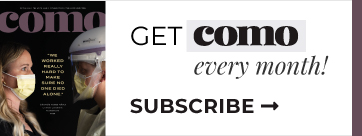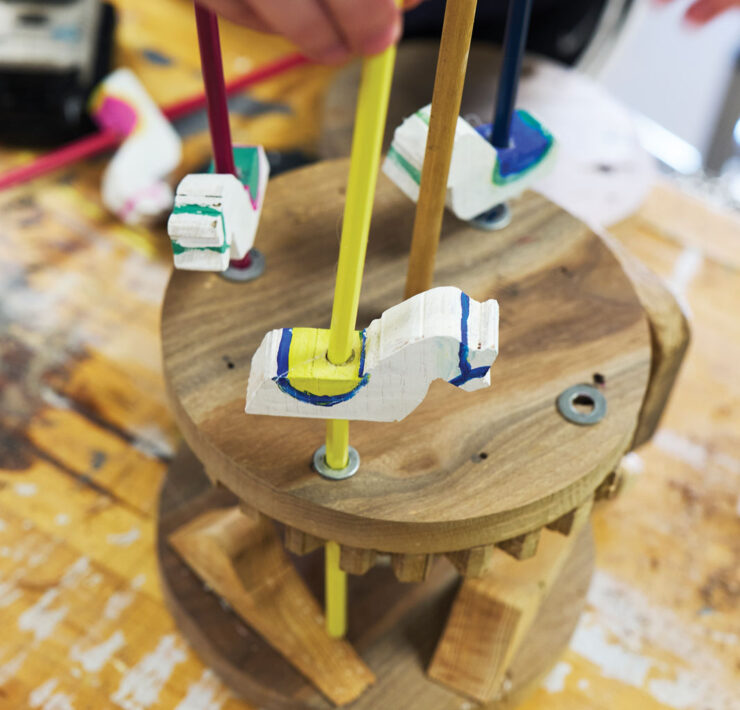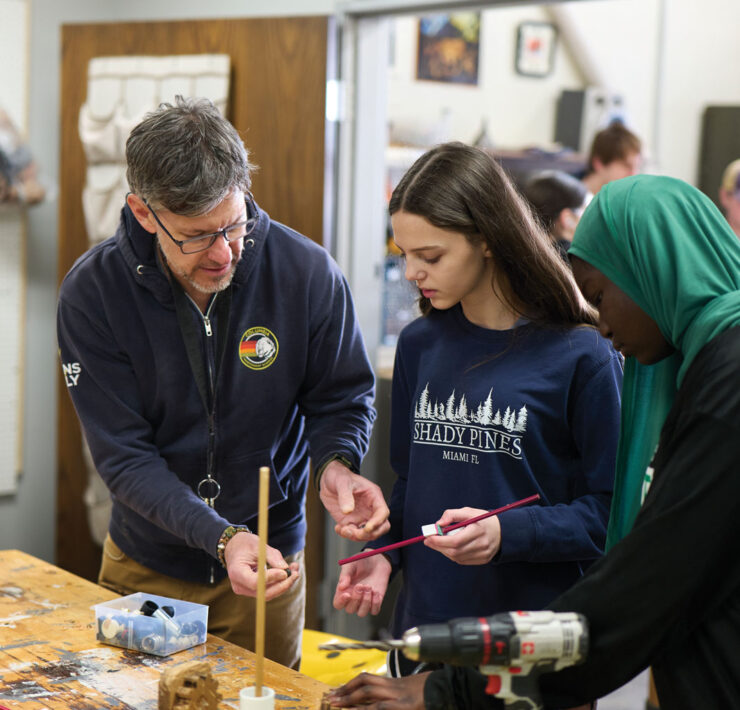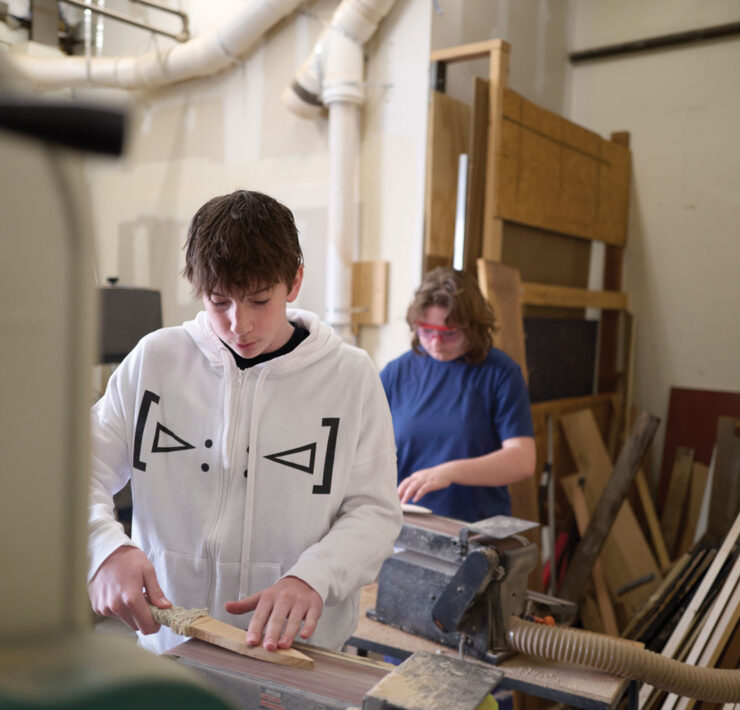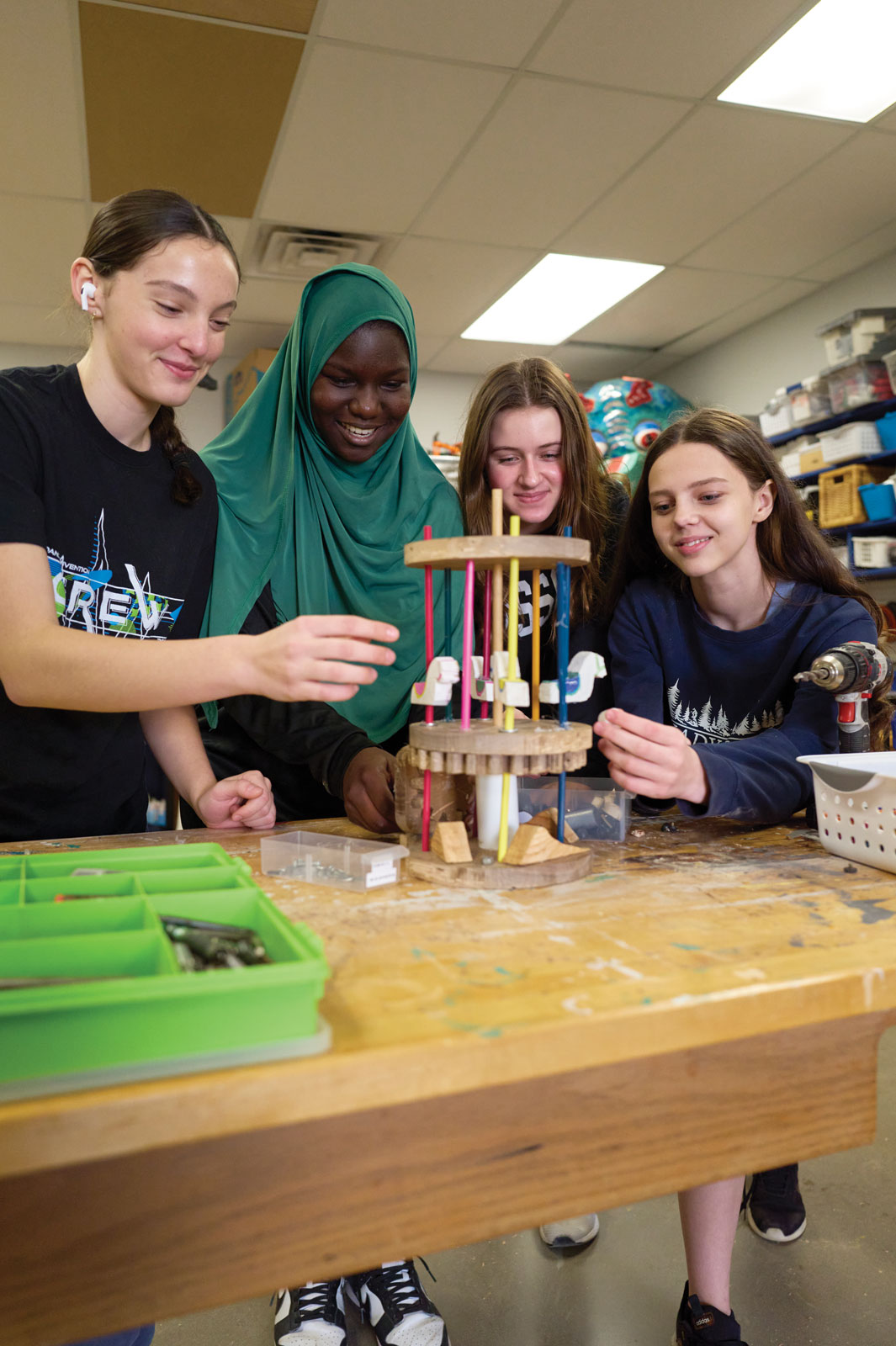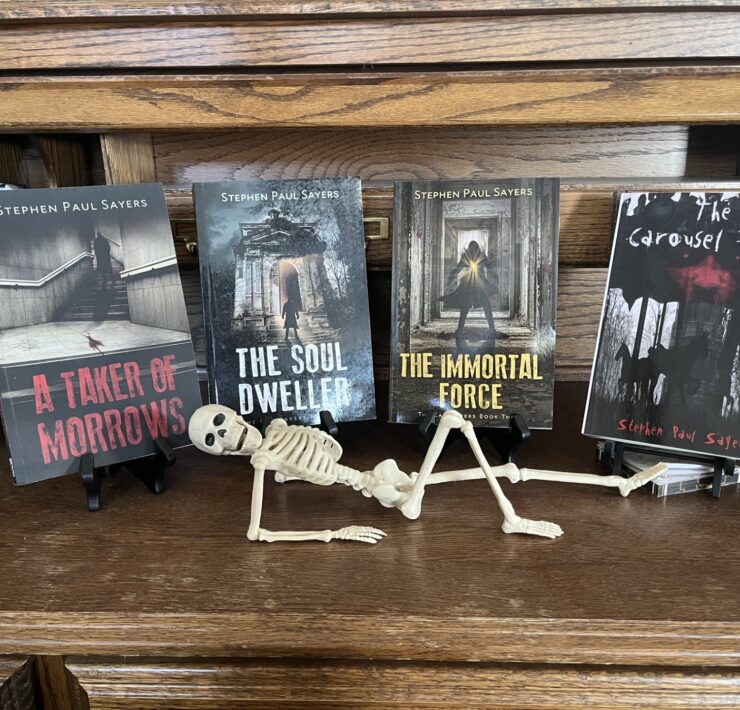The Cube Captivates Learning at Columbia Independent School
- Photos by Keith Borgmeyer.
- This story originally appeared in the March 2024 innovation and technology issue of COMO Magazine.
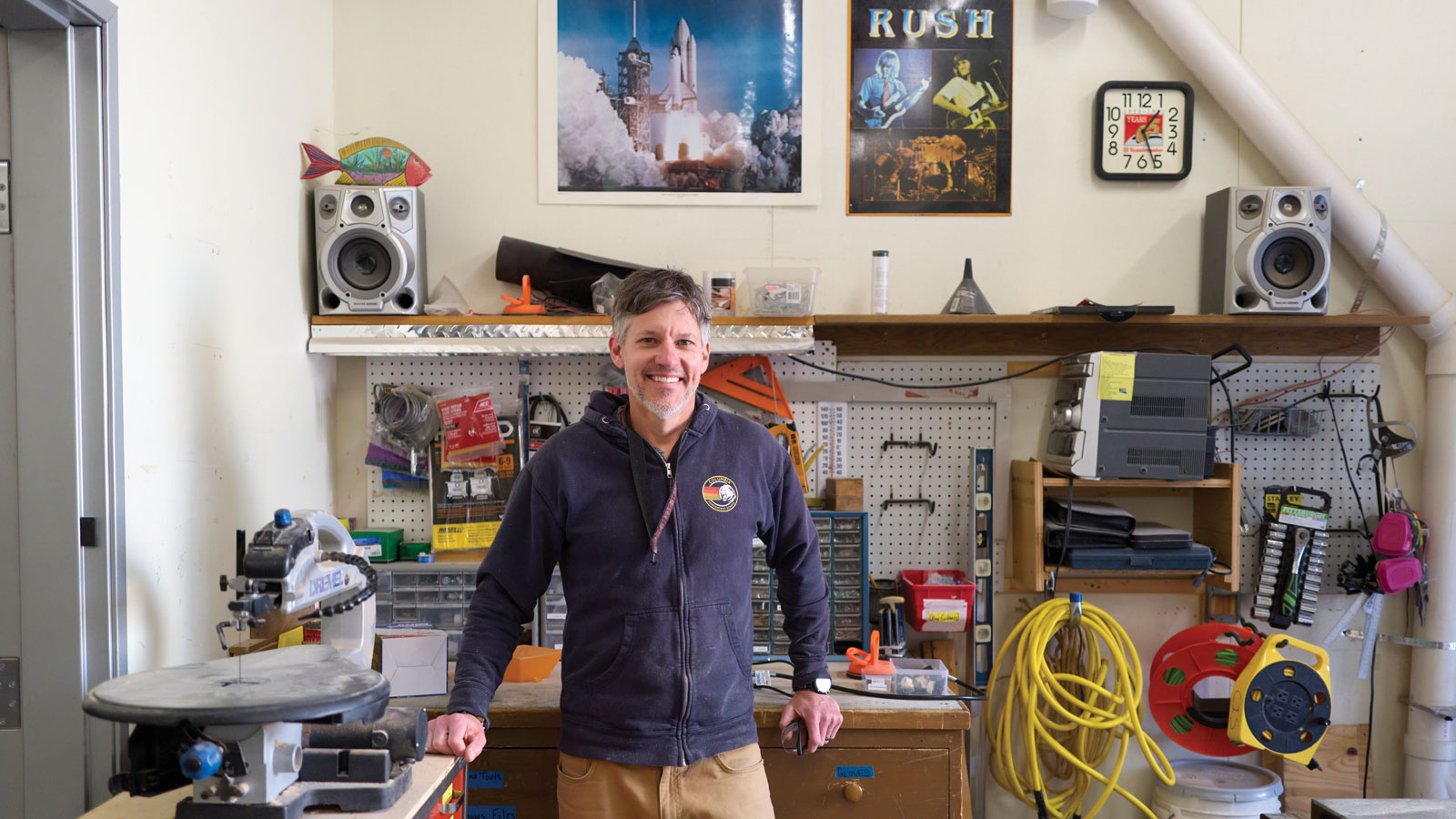



 +2
+2 The Cube Captivates Learning at Columbia Independent School
The Cube Captivates Learning at Columbia Independent School
The Cube Captivates Learning at Columbia Independent School
The Cube Captivates Learning at Columbia Independent School
The Cube Captivates Learning at Columbia Independent School
Inspiration, innovation, and investigation.
STEM is a hot word in the world of education these days. If you have pre-collegiate children, you have more than likely heard this term. Relative to our education system, it’s fairly new, and its popularity continues to grow. It stands for Science, Technology, Engineering, and Mathematics and was introduced in 2001 by the scientific administrators at The National Science Foundation.
Since the inception of public education in the U.S., the system has grown, changed, and acclimated to the times. Now, in addition to the basic “readin’, writin’, and ‘rithmatic” that are the staple of every elementary classroom, teachers can offer any number of individual subjects.
What’s so earth-shattering about science, technology, engineering, and mathematics that they have an acronym is that STEM subjects are taught in partnership with each other, and the education is experiential. STEM is lab-based, hands-on learning.
In Columbia
Teachers, students, staff, and parents at Columbia Independent School (CIS) on North Stadium Drive refer to their beloved STEM lab as “The Cube.” It takes its moniker from the three I’s that are its foundation as well as its path to the future: Inspiration, Innovation, and Investigation.
It began in a typical-size classroom in 2014, led by Wally Luther, previously a science teacher. Luther continues to head the program, and the lab has tripled in size since it opened its doors and now includes a shop area specific to woodworking.
A Student’s Journey
What happens in a lab dedicated to science, technology, engineering, and math? A lot. A student at CIS can learn everything from computer programming and set building for theatre, to creating a working weather balloon or remote control gliders. Beginning in junior kindergarten, students spend regularly scheduled time in The Cube, first learning the basics of design and programming and adding on to their skills through each passing grade. By the time students are in the upper grades, their Cube experience is ninety to ninety-five percent hands-on.
A junior kindergartener starting her Cube experience can expect to learn elemental computer skills.
“They start with touch screens and then move into the logic of it,” Luther explains. From there, it’s computer programming and coding. These skills are vital in a STEM lab as they are foundational to every project. Luther identifies those as “baseline skills,” adding, “They’re obviously designing all the time, whatever they’re creating, using computer-aided design.”
The younger grades program LEGO robots, build with Snap Circuits, and use software to design and print 3D geometric shapes. They test the strength of bridges they design and build.
“These projects often correspond with concepts they are learning in the classroom,” says Kari Stockwell, director of admissions and marketing at CIS. “In third grade, students create cardboard communities as part of their social studies curriculum.”
A student’s initial woodworking project is to design and make a spoon. Those are the sole directives: design it and make it. Students have free rein on size, shape, and creative aspects. The spoons can be as whimsical or straightforward as they choose. Some spoons are fit for the table at the top of the beanstalk and others for your morning breakfast bowl. The important thing is that no two are alike. The spoons are as individual as their creators.
As the students grow in their knowledge, skills, and abilities, The Cube classroom becomes The Cube lab. Learning moves from teacher-centric to student-centric and project-based. Students come up with an idea and present it to Luther. Together, they work out the skills required for the project.
In addition to design, students learn to ask: What materials are needed? What areas of knowledge are required: wiring, woodworking, metalwork, soldering, physics, etc. What don’t they know and therefore need to research? Where do they get the supplies, and can they use reclaimed or repurposed materials? These are a few of the considerations at the start of each project.
A couple of helpful additions to The Cube are its 3-D printers. Students use their computer skills to design their project, fabricate a model using one of the lab’s two 3-D printers, and then begin the work of bringing their idea to life.
Collaboration
Although The Cube continues to be referred to as a STEM lab, there’s a blossoming partnership with art for the making of a STEAM lab. It seems natural that science, technology, engineering, and math would work together. Those are all right brain-dominant areas of study. So how do the arts fit into a STEM education?
Students who are gifted in and drawn to theater, music, literature, painting, and general creativity can be found in The Cube. For theater, they work together to create sets and props, backdrops, and “living” illustrations. Students in love with literature can collaborate with students more gifted in physics and math to create scenes, objects, or illusions from a favorite story.
The teachers of these varied subjects are in this together as well. Art, science, math, even geography — these teachers work together to come up with projects for the students that combine their areas of study to create something amazing. Projects in the past have included an interactive cafeteria-size wall map of the world, weather balloons, remote-controlled gliders, and musical instruments (most notably a guitar fabricated from thousands of colored pencils and a non-metal trombone).
CIS is in the throes of planning a Renaissance festival — the ultimate collaboration among all the subjects, students, and teachers. Art plays a crucial role in the creation of scenes and props. There will be performances and poetry readings. Math, science, engineering, and physics will showcase their skills; and of course, the Renaissance is historical, so they have now added history to the acronym.
The Future
Columbia Independent School plans to open its new high school building this fall. Luther is happy that the new space is on the same campus. It’s important to him that CIS remains one school, so the older students can mentor the younger ones and build relationships.
“We like the mentorship and modeling that goes on from the older kids to the younger kids and the exposure that everyone has to all of the activities and events that go on throughout the different grade levels,” he explains.
CIS officials say that as their students graduate and eventually move into the adult workforce, they bring their skills and hands-on experiences from The Cube, giving them a jump start into real-world situations. They graduate “with a level of confidence and a can-do attitude that isn’t typical of a twelfth-grade graduate” to challenge themselves and their peers to be the best version of themselves.”


